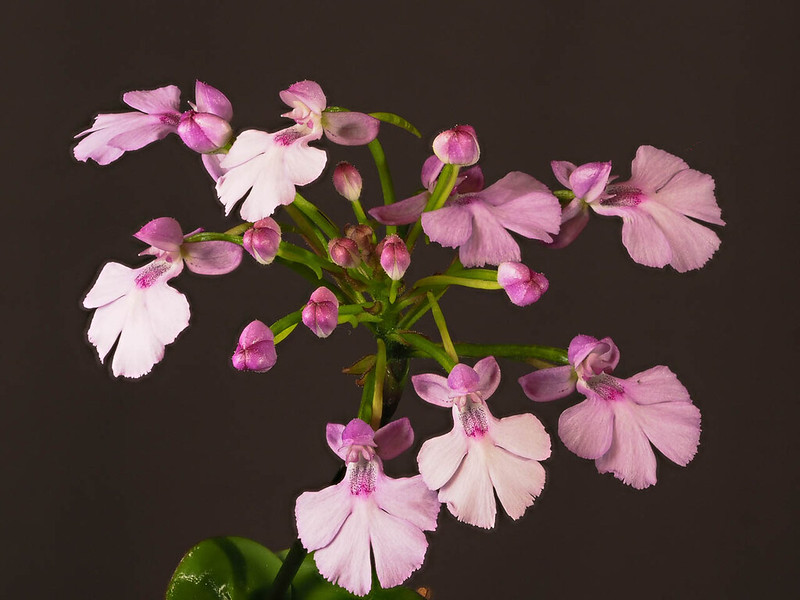
Cynorkis angustipetala may sound like an esoteric species, but it is a relatively available species. Due to some nomenclature confusions (I attempted to summarize them below), C. angustipetala may be sold as C. guttata or C. uncinata. Well, I admit genus Cynorkis is not as popular as other orchids such as Paphiopedilum, but there are quite a few of us who get excited by them, and this is relatively popular within the genus due to the large display.
Cynorkis is a fairly large genus with more than 150 mostly terrestrial or lithophytic species. The genus name means dog's balls; I mean testicles, not the slobbery tennis balls for fetch. Hmmm, I guess they imagined that the tubers look like the testicles. Madagascar is the center of the diversity in this group, with about 120 species, which are mostly endemic to Madagascar (Hermans 2009). Cynorkis angustipetala is also endemic to Madagascar, and its habitat is terrestrial in rocky outcrops and grassland. It is fairly common in the highlands of Madagascar and has sporadic distribution in the east and west of the island. In TROPICOS, there are 2 records of specimens from Antsiranana at the elevation of 225m and 315m. GBIF lists 3 additional records, which include western populations.
 |
| © R. Jenny 2005. more typical Cynorkis angustipetala (link), showing deep purple coloration at the base of lip. Swiss Orchid Foundation at the Herbarium Jany Renz. Botanical Institute, University of Basel, Switzerland. This photo is currently miss-labeled in their database, and I notified the issue. |
Now let's go back to the taxonomy, this is a very confusing topic! First, what we have been calling C. angustipetala is not what was originally described, so we have been misapplying C. angustipetala for a different species. What we have been calling C. angustipetala (species with green sepals) is C. speciosa, and real C. angustipetala is the species with pink sepals, which Hermans et al. described as C. guttata in 2007. Hermans and Cribb (2014), who straightened up these mistakes, speculated that this confusion was originated from the type specimen folder of C. anugustipetala, which unfortunately contained a herbarium sheet that had both C. angustipetala and C. speciosa in a single sheet as well as another sheet that had C. speciosa. So subsequent researchers looked at the type specimen folder, and they mistakenly thought that the name C. angustipetala is referring to the green sepal species, which is actually C. speciosa. As a side note, Table 1 of Hermans and Cribb (2014), comparing C. angustipetala and C. specoisa, appears to have some typo/mistakes (columns are switched for some characters).
This species with green sepals, which we used to call C. angustipetala, is actually C. speciosa:
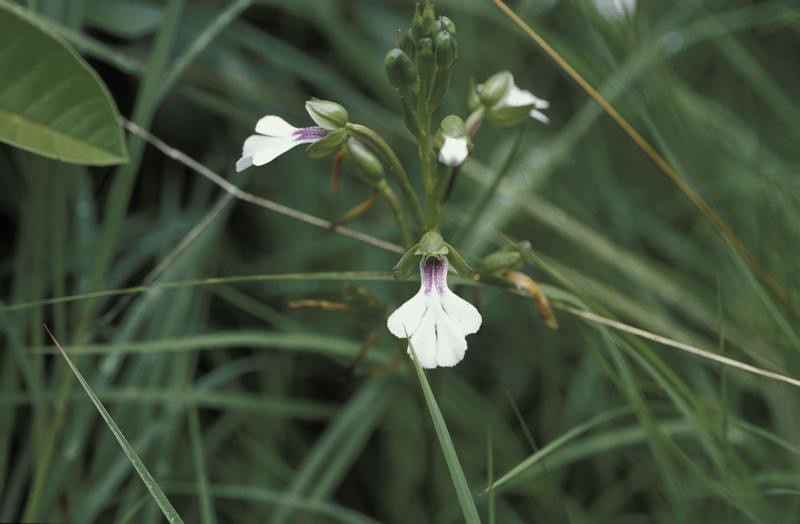 |
| Cynorkis speciosa by Gael Rakotovao (link) licensed under CC-BY 2.0. |
Earlier in 2007, Hermans et al. noticed that two types of C. uncinata were circulating around partly due to erroneous illustration in a publication. They described one of them as a new species, C. guttata, which they changed to a synonym of C. angustipetala in 2014. At that time, they didn't know the issue of C. angustipetala vs C. speciosa. As a follow up, Hermans (2009) had a detailed explanation of the confusing nomenclature history of the related species: C. angustipetala (= C. guttata at that time), C. calanthoides, C. uncinata, C. purpurascens (var. praecox). In this 2009 paper, he reduced C. uncinata as a synonym of C. calanthoides after examining the type specimens. Additionally, the paper provided clear explanations of the differences between the 3 species.
Once you know what to look at, it seems to be fairly easy to distinguish them. My plant is a pale morph, and the typical C. angustipetala has more intense purple color like the photo by R. Jenny above. But generally C. angustipetala (syn. C. guttata) has dark purple color with spots at the base of the lips as seen in my photos while C. calanthoides doesn't have it, but it has a white spot in the middle of the lip (IOSPE photo).
 |
| © R. van Vogt 2008. Cynorkis calanthoides (link). Swiss Orchid Foundation at the Herbarium Jany Renz. Botanical Institute, University of Basel, Switzerland. |
Here are the photographs of C. purpurarescens (link to the illustration of the original description).
 |
| © Patrice Bernet 2010. Cynorkis purpurarescens from La Réunion (link). Swiss Orchid Foundation at the Herbarium Jany Renz. Botanical Institute, University of Basel, Switzerland. |
 |
| © R. van Vogt. Cynorkis purpurarescens (link). Swiss Orchid Foundation at the Herbarium Jany Renz. Botanical Institute, University of Basel, Switzerland. |
Compared to C. guttata, the color of the base of the lip is different in C. purpurascens. It lacks purple coloration, or in the second photo, it has a little darker pink area, but you do not see any dark purple spots. Hermans (2009) notes other differences; C. purpurascens has smaller leaves, a smaller number of flowers per inflorescence, slightly different shape of the lip, and a longer spur.
In summary (current correct name on the left side of the equal sign),
The confusion still exists among hobbyists, and I also didn't know about this mess until I started to look for the correct ID of my plant. The Plant List of Royal Botanical Gardens, Kew or TROPICS of Missouri Botanical Garden isn't quite up-to-date yet (in Fall 2016). The photos on the internet is a big mess; sometime, a completely different non-Malagasy species, C. uncata, with a similar spelling as C. uncinata, is included in this confusion matrix, too. Indeed, I obtained my plant as C. uncinata from Louisiana Orchid Connection (LOC), who imported it from Madagascar in spring 2016 (mislabelling was by the exporter, not by LOC). When I visited Redland International Orchid Festival with my family in June 2016, Tin and John of LOC were showing me lots of cool species. They also had many orchids freshly imported from Madagascar, and I was quite impressed by the condition of the plants. There were so many species I wanted to get, but I managed to escape with only 10 or so species. The giant tuber of this C. guttata was one of the plants I got from LOC at that time. I had a great time talking to Tin and John, who shared their extensive knowledge of rare species with me! They periodically organize the import from Madagascar, and for people who is interested in hard-to-obtain Malagasy orchids, I highly recommend to place pre-orders with LOC!
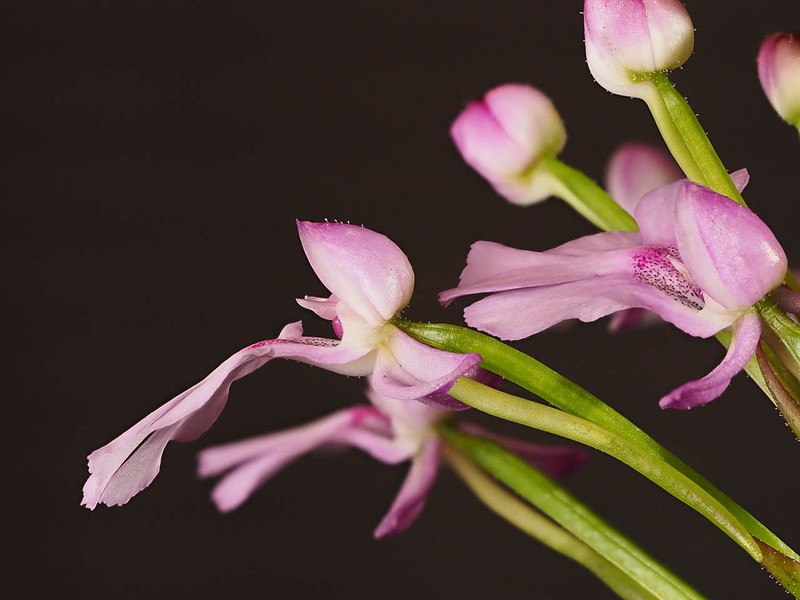 |
| Side view with spur. |
- C. angustipetala = C. guttata and sometime sold as C. uncinata
- C. calanthoides = C. uncinata
- C. speciosa = what we used to call C. angustipetala.
The confusion still exists among hobbyists, and I also didn't know about this mess until I started to look for the correct ID of my plant. The Plant List of Royal Botanical Gardens, Kew or TROPICS of Missouri Botanical Garden isn't quite up-to-date yet (in Fall 2016). The photos on the internet is a big mess; sometime, a completely different non-Malagasy species, C. uncata, with a similar spelling as C. uncinata, is included in this confusion matrix, too. Indeed, I obtained my plant as C. uncinata from Louisiana Orchid Connection (LOC), who imported it from Madagascar in spring 2016 (mislabelling was by the exporter, not by LOC). When I visited Redland International Orchid Festival with my family in June 2016, Tin and John of LOC were showing me lots of cool species. They also had many orchids freshly imported from Madagascar, and I was quite impressed by the condition of the plants. There were so many species I wanted to get, but I managed to escape with only 10 or so species. The giant tuber of this C. guttata was one of the plants I got from LOC at that time. I had a great time talking to Tin and John, who shared their extensive knowledge of rare species with me! They periodically organize the import from Madagascar, and for people who is interested in hard-to-obtain Malagasy orchids, I highly recommend to place pre-orders with LOC!
Here are a couple of detailed photos of my plant.

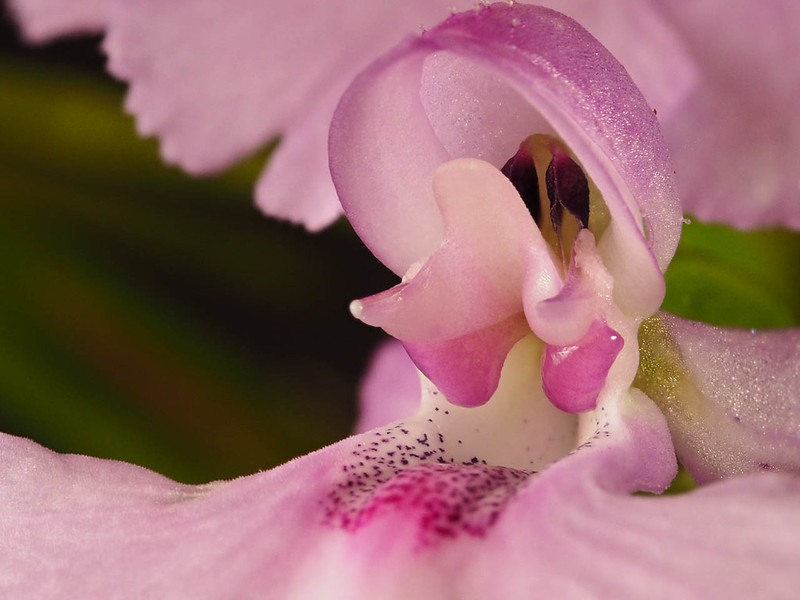

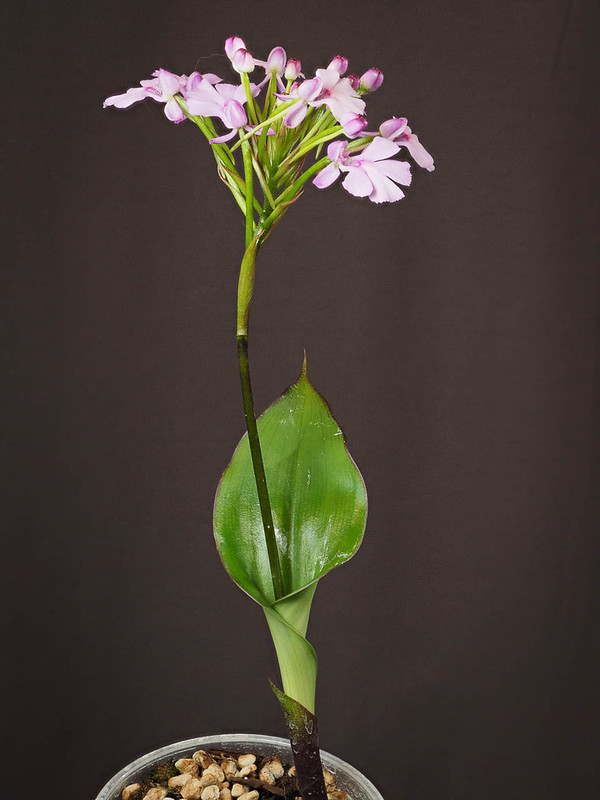
Cultivation: I just got the tuber in June 2016, and kept it fairly dry (with occasional watering, probably once every other week). It started to grow around the end of August since it is still in the Southern hemisphere season, and I gradually increased the watering when the shoot reached to around 2-3 cm. Now I'm keeping it fairly moist. I don't know well about the cultivation of this plant yet, but it is supposed to be an easier Cynorkis. According to Hermans (2009), tubers should be planted in well drained mix, mainly with grit and cover it with a thin layer of sphagnum moss and loam. When the leaves dies back, cut back watering and fertilization with occasional misting. Keep it moist when it is growing. The minimum temperature should be 10C, but it can tolerate some heat. Here is a link to a blog post about this species by the Fuqua Orchid Center, and it has good cultivation tips. I'll update the cultivation section once I have more experience with this plant.
References:
Hermans, J., Hermans, C. & Cribb, P. 2007. Cynorkis from Madagascar. Orchid Review 115: 248–255.
Hermans, J. 2009. 650. CYNORKIS GUTTATA. Curtis's Botanical Magazine, 26(3), 221-228 (link to abstract)
Hermans, J. & Cribb, P. 2014. New species and new names in Malagasy orchids (Orchidaceae). Kew Bulletin 69: 9517. doi:10.1007/s12225-014-9517- (link to abstract).
Hermans, J. & Cribb, P. 2014. New species and new names in Malagasy orchids (Orchidaceae). Kew Bulletin 69: 9517. doi:10.1007/s12225-014-9517- (link to abstract).
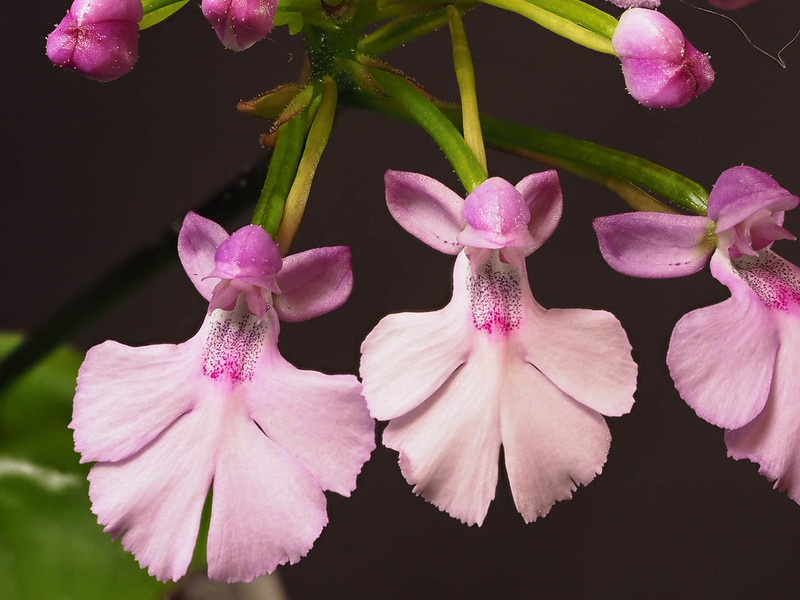

Great, informative breakdown of these plants, it is fascinating to learn about the taxonomy. Thanks so much for sharing!
ReplyDeleteThank you for the comment, gzollin!
Delete